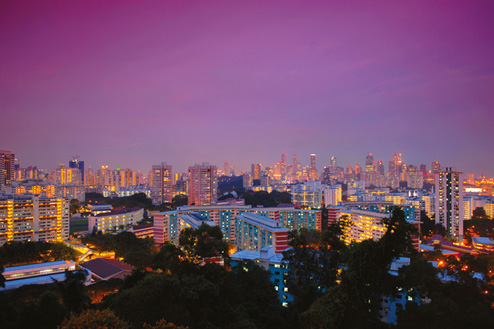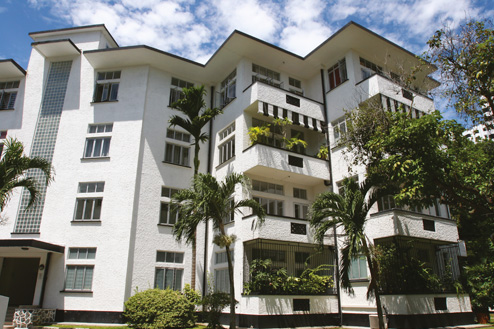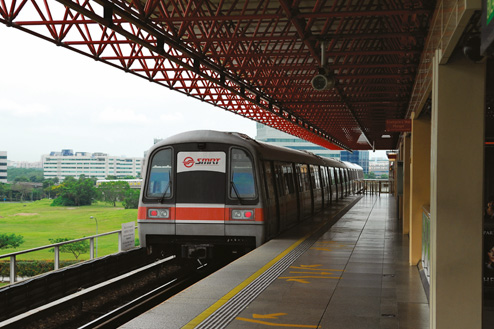Primary & Secondary Schools
Singapore has an array of excellent primary and secondary schools. Most expats opt to enrol their kids in an international school as these have foreign curricula and teachers. Attending an international school can be a valuable opportunity for your child to learn alongside students from other cultures and backgrounds. In general, the teaching standards are excellent and students come away with enriching experiences.
Parents are conscious of the fact that they will probably return to their home country at some point and that their children will have to fit in with the local education system. This is less of a concern at the primary school level but parents often choose a secondary school that offers the same curriculum as in their home country. Another option is to have your child attend a school that follows the International Baccalaureate Diploma programme as this is taught and recognised around the world. The admission staff at the international schools are familiar with these concerns, so it’s a good idea to discuss your situation with them.
International schools’ hours are usually Monday to Friday, 8:30 to 15:30. Some, such as The Japanese School, also have classes on Saturday mornings, and it’s not uncommon for extracurricular events to be scheduled for Saturdays and weekday evenings.
School holidays vary, with nationally aligned schools often following the holiday schedule of the country to which they are aligned (so the Australian International School follows the holiday schedule of schools in Australia). Many of Singapore’s international schools have a summer holiday around June and July and a holiday in late December to early January.
International schools range in size from a few hundred students up to about 3,000 students. In general, they have pleasant classrooms and at least some outdoor areas for sports, possibly a pool and an air-conditioned gymnasium. Class sizes vary, but they’re usually capped at about 25 students. Many schools offer excursions to other countries in the region for sporting or cultural events or volunteering experiences.
With their extensive infrastructure and foreign teachers, international schools don’t come cheaply. Fees vary widely but generally the bigger the school and the more facilities it has, the heftier your bill. You can expect to pay anywhere from $4,500 to $18,000 in annual fees per child for primary schooling and from $6,000 to $23,000 for secondary schooling. In addition to tuition fees, you should also factor in uniforms, school supplies, transport and excursions. Most schools have an application fee ranging from $100 to $2,800 but sometimes it’s set off against the tuition fees if your child is accepted.
Parents are conscious of the fact that they will probably return to their home country at some point and that their children will have to fit in with the local education system. This is less of a concern at the primary school level but parents often choose a secondary school that offers the same curriculum as in their home country. Another option is to have your child attend a school that follows the International Baccalaureate Diploma programme as this is taught and recognised around the world. The admission staff at the international schools are familiar with these concerns, so it’s a good idea to discuss your situation with them.
International schools’ hours are usually Monday to Friday, 8:30 to 15:30. Some, such as The Japanese School, also have classes on Saturday mornings, and it’s not uncommon for extracurricular events to be scheduled for Saturdays and weekday evenings.
School holidays vary, with nationally aligned schools often following the holiday schedule of the country to which they are aligned (so the Australian International School follows the holiday schedule of schools in Australia). Many of Singapore’s international schools have a summer holiday around June and July and a holiday in late December to early January.
International schools range in size from a few hundred students up to about 3,000 students. In general, they have pleasant classrooms and at least some outdoor areas for sports, possibly a pool and an air-conditioned gymnasium. Class sizes vary, but they’re usually capped at about 25 students. Many schools offer excursions to other countries in the region for sporting or cultural events or volunteering experiences.
With their extensive infrastructure and foreign teachers, international schools don’t come cheaply. Fees vary widely but generally the bigger the school and the more facilities it has, the heftier your bill. You can expect to pay anywhere from $4,500 to $18,000 in annual fees per child for primary schooling and from $6,000 to $23,000 for secondary schooling. In addition to tuition fees, you should also factor in uniforms, school supplies, transport and excursions. Most schools have an application fee ranging from $100 to $2,800 but sometimes it’s set off against the tuition fees if your child is accepted.













